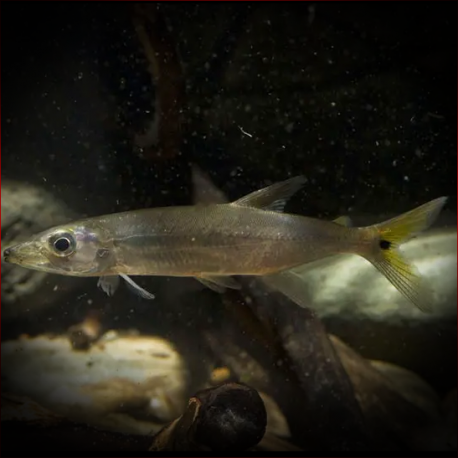More info
Datasheet
| Minimum Tank Size | 2000 litres / 528.34 US gallons |
| Maximum Size | 26.0cm / 10.24inches |
| Temperature | 22°C / 71.60°F - 28°C / 82.40°F |
| Hardness | 1.01dgH / 18ppm - 12.05dgH / 215ppm |
| pH | 6.0-7.5 |
Behaviour:
The Acestrorhynchus Microlepis is relatively peaceful with tank mates that are too large to be swallowed, displaying territorial behavior that requires careful selection of community companions. It is best kept with placid species like Geophagus spp., Acarichthys heckelii, medium-sized doradid or loricariid catfishes, and certain characids from genera such as Ctenolucius, Mylossoma, or Myloplus. While not aggressive towards conspecifics, juveniles showcase a schooling instinct, with older individuals tending towards solitary behavior but occasionally grouping together, ideally in numbers of four or more. Notably, they are cannibalistic, highlighting the importance of ensuring individuals are of comparable size within a group.
Feeding and Diet:
Being obligate piscivores, the Acestrorhynchus Microlepis primarily consumes smaller prey like tetras. Initially preferring live fish, they can be transitioned to accept dead and even dried alternatives. It is crucial to avoid feeding them mammalian or avian meat, as well as 'feeder' fish that may introduce parasites or diseases while offering limited nutritional value unless appropriately conditioned beforehand.
Reproduction & Dimorphism:
Observations on a related congener species suggest that spawning in the Acestrorhynchus Microlepis likely occurs midwater, with males displaying a 'figure-of-eight' swimming pattern around stationary females. Parental care is absent, and sexually mature females tend to grow slightly larger and be deeper-bodied compared to males.
Habitat and Distribution:
This species prefers major river channels and tributaries, migrating to flooded zones during the wet season. Widely distributed across northern Amazon drainages in Peru, Ecuador, Brazil, Río Orinoco in Venezuela, and various coastal river systems in Guyana, Suriname, and French Guiana.
Aquarium Setup:
The Acestrorhynchus Microlepis thrives in a tank with an open-water setup, where an excess of cover can induce stress, necessitating a decor-free environment with ample open space. Natural aesthetics can be achieved with sandy substrate, leaf litter, driftwood branches, and plants like Microsorum pteropus or Anubias attached to solid surfaces. Providing efficient filtration, a tightly fitting cover to prevent jumping, and consistent water changes are essential for their well-being in captivity.

